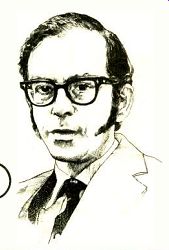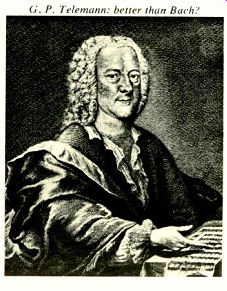By JAMES GOODFRIEND, Music Editor

MODERN MUSIC:
IT is the inevitable duty of every age to make value judgments about the artistic products of its own time, judgments that will be passed upon by posterity with the same critical eye and ear as the art itself. The good citizens of Leipzig in the early eighteenth century, for example, who were unfortunate enough to have put down their judgment in writing for all future ages to see, will probably never be pardoned for their estimation of Telemann and Graupner as being superior to Bach. Mid-Europeans of the nineteenth century get high marks today for their appreciation of Beethoven--at least up to his late works. But they fail miserably, in our eyes, for their estimation, or lack of estimation, of Schubert-he was ignored until Robert Schumann discovered him and told the world what it had been missing. One could also cite (with less ease) composers praised to the skies by their contemporaries whose work is all but defunct today. But it is a hard thing to assess art contemporaneously, and it is harder now than ever before, simply because there is so much more of it than ever before.
An assessment as such was probably not what was in the minds of the directors of the Fromm Music Foundation at Harvard when they sought, through a mail survey, to get some opinions on the music of our time. What they asked for, in a letter addressed to 1,600 composers, conductors, performers, critics, educators, and others, was a list of "works of quality from the last forty years which you believe have not been performed with any frequency or which have not been performed at all." Their stated purpose in making and publishing the results of this survey was "to help bring this worthy but neglected repertoire into the mainstream of our musical life" by encouraging performing musicians to use the list as a means of extending their own repertoires. Limited in scope though it may be, no one can question the worthiness of the endeavor.
What the foundation came up with, how ever, can be read in different ways. Over three hundred people replied and the replies were then tabulated, individual works receiving an A, B, or C rating for their frequency of citation. An A means that one to four people list ed the work; B, five to eight; C, nine or more.
I wish that they had given the actual number of citations rather than categorical approximations, but even so, it seems to me that what WHERE WE ARE we have is a vote, from a musically sophisticated segment of the population. on what is believed to be important in the music of our own time, for virtually all modern music is performed relatively infrequently, and almost all of it can therefore be considered eligible for such a list. There are some few pieces that do get their fair share of performances (certain works by Bartok, Stravinsky, Cop land, Orff, Shostakovich, Prokofiev, and others), and that alone demonstrates our feelings about them. But out of the thousands of others, this survey can indicate what we feel is important (the interpretation is my own, and I take responsibility for misunderstandings and error) and tell us, essentially, where we are in music. Where are we? Prepare for a few surprises. First of all, a lot of works were mentioned that were written more than forty years ago, signifying one or both of the following: (1) people felt strongly enough about certain pieces to consciously disregard instructions; (2) much of the music of more than forty years ago is still so little accepted that, even in the minds of musical sophisticates, there is a vagueness about just how old or new it is.

----- G. P. Telemann: better than Bach?
There were, also, an immense number of works listed with A category ratings (the total response included 2,207 works by 686 composers, according to the introduction to the published results). Many of these are the result of composers' suggesting their own works (perfectly legitimate) or the individual enthusiasms of only a couple of listeners.
The B ratings are interesting in that they permit us to see how many modern works have made something of an impact on their time, but it is the C ratings, I think, that identify those works we currently feel to be our most important musical works of art. They are as follows:
Milton Babbit: Relata 1* Alban Berg: Violin Concerto (1935)
Luciano Berio: Circles Luciano Berio: Sinfonia Pierre Boulez: Phi Selon Pli
Pierre Boulez: Le Marteau Sans Maitre Elliott Carter: String Quartets Nos. 1, 2, 3 Elliott Carter: Variations for Orchestra Elliott Carter: Piano Concerto* Elliott Carter: Concerto for Orchestra Elliott Carter: Double Concerto Mario Davidovsky: Synchronisms (num bers not specified) Lukas Foss: Time Cycle (chamber version)
Lukas Foss: Time Cycle (orchestral version) Roy Harris: Symphony No. 3 Paul Hindemith: Mathis der Maler (opera)
Charles Ives: Symphony No. 4 (1910-16) Donald Martino: Mosaic Wallingford Reigger: Symphony No. 3 Carl Ruggles: Sun Treader Arnold Schoenberg: Moses and Aron Arnold Schoenberg: Five Pieces for Orchestra (1909!) Roger Sessions: Symphony No. 2 Roger Sessions: Violin Concerto Karlheinz Stockhausen: Gruppen Igor Stravinsky: Agon
Igor Stravinsky: Requiem Canticles Edgard Varese: Deserts Anton Webern: Concerto for Nine Instruments
(The last of these was listed twice under two different names, receiving an A and a B, thus essentially adding up to a C.)
OF course, one has to pay more attention to the inclusions than to the omissions (Cage? Henze? Penderecki?), but there is still enough that is unexpected to exercise the mind. Some of the various avant-gardes are well represented, but then there are those retrospective choices too: Harris, Reigger, Ruggles, per haps even Sessions. And Mathis der Maler: everyone who sees it agrees it is a master piece, but one so rarely gets the chance to either see it or hear it. And Schoenberg's Five Pieces: the work is sixty-six years old, obviously established in reputation but not at all in the concert hall. And then we have the dark horses: Davidovsky's Synchronisms, Foss' Time Cycle, Martino's Mosaic, even Babbitt's Relata I instead of his better-known Philomel or Vision and Prayer. These are not well-known pieces even by reputation, even among the music fraternity. But, obviously, an important segment of the musical elite thinks they should be.
I might point out that all but six of these works are currently available on records (those that are not are starred). It is, perhaps, just as incumbent upon us, as music listeners, as it is on performers to increase our familiarity with the music of our own time and find out just where we are--or at least where some people think we are.
Also see:
THE OPERA FILE, WILLIAM LIVINGSTONE
THE SIMELS REPORT, STEVE SIMELS
Source: Stereo Review (USA magazine)